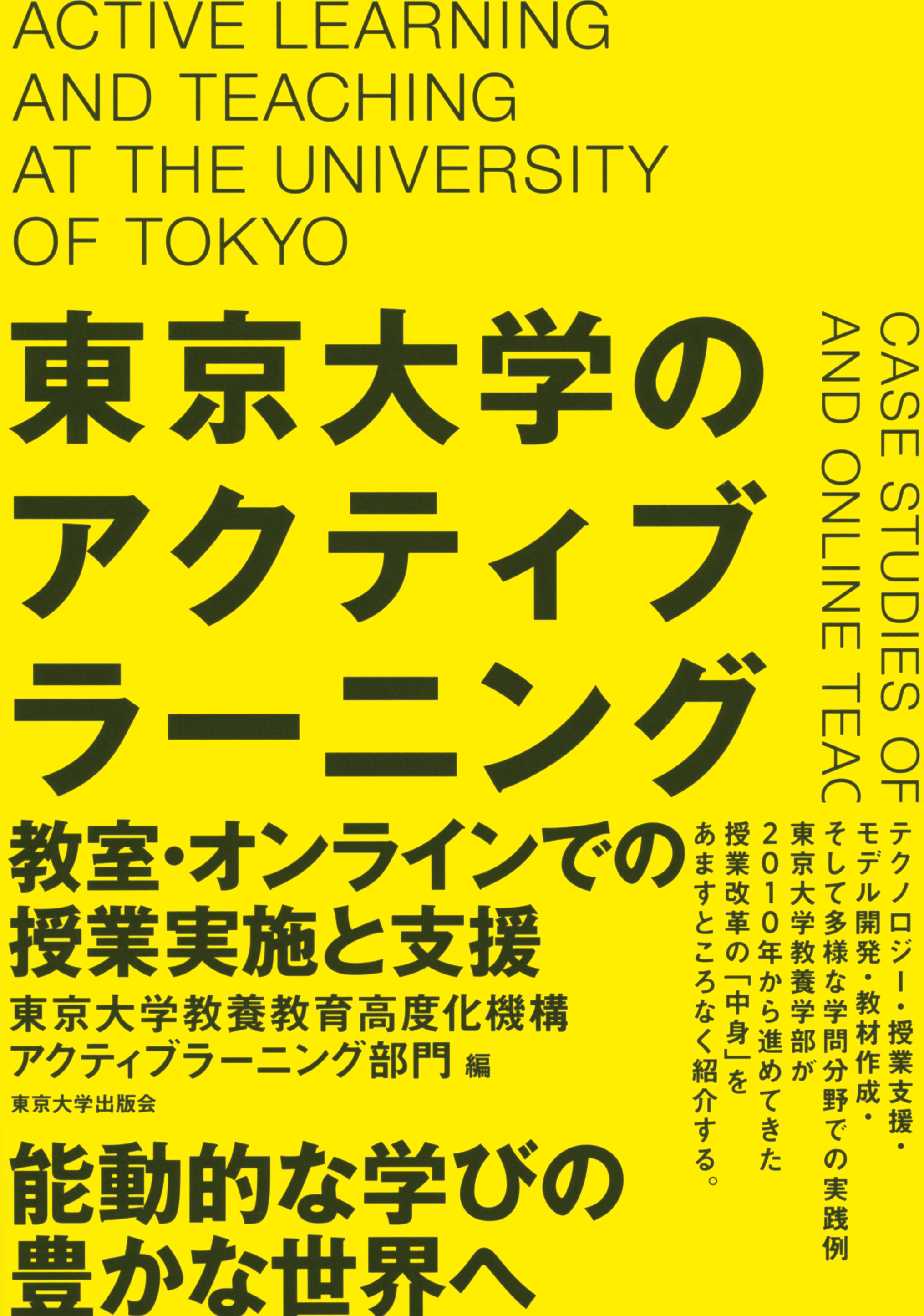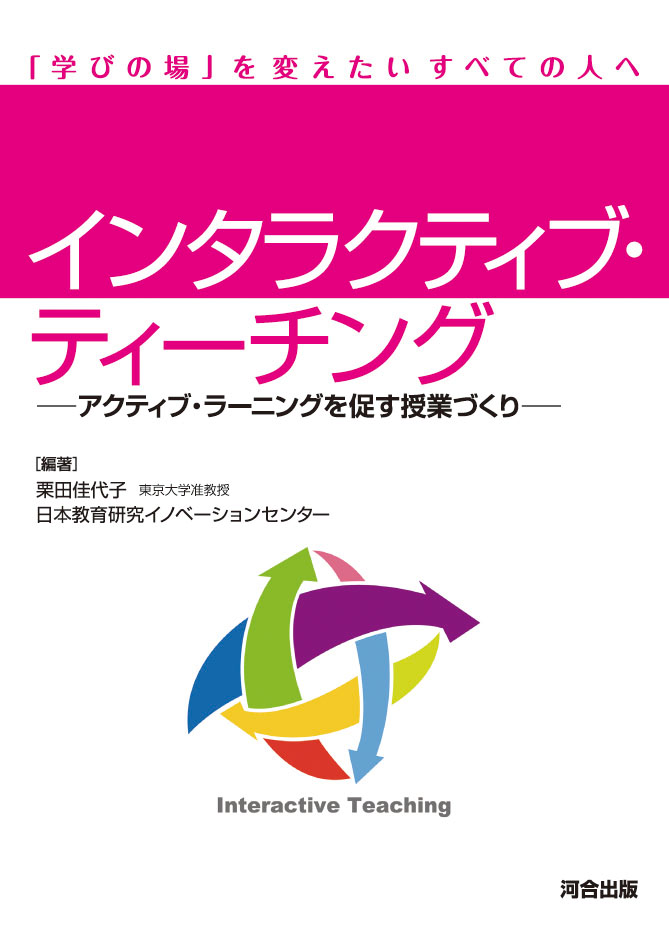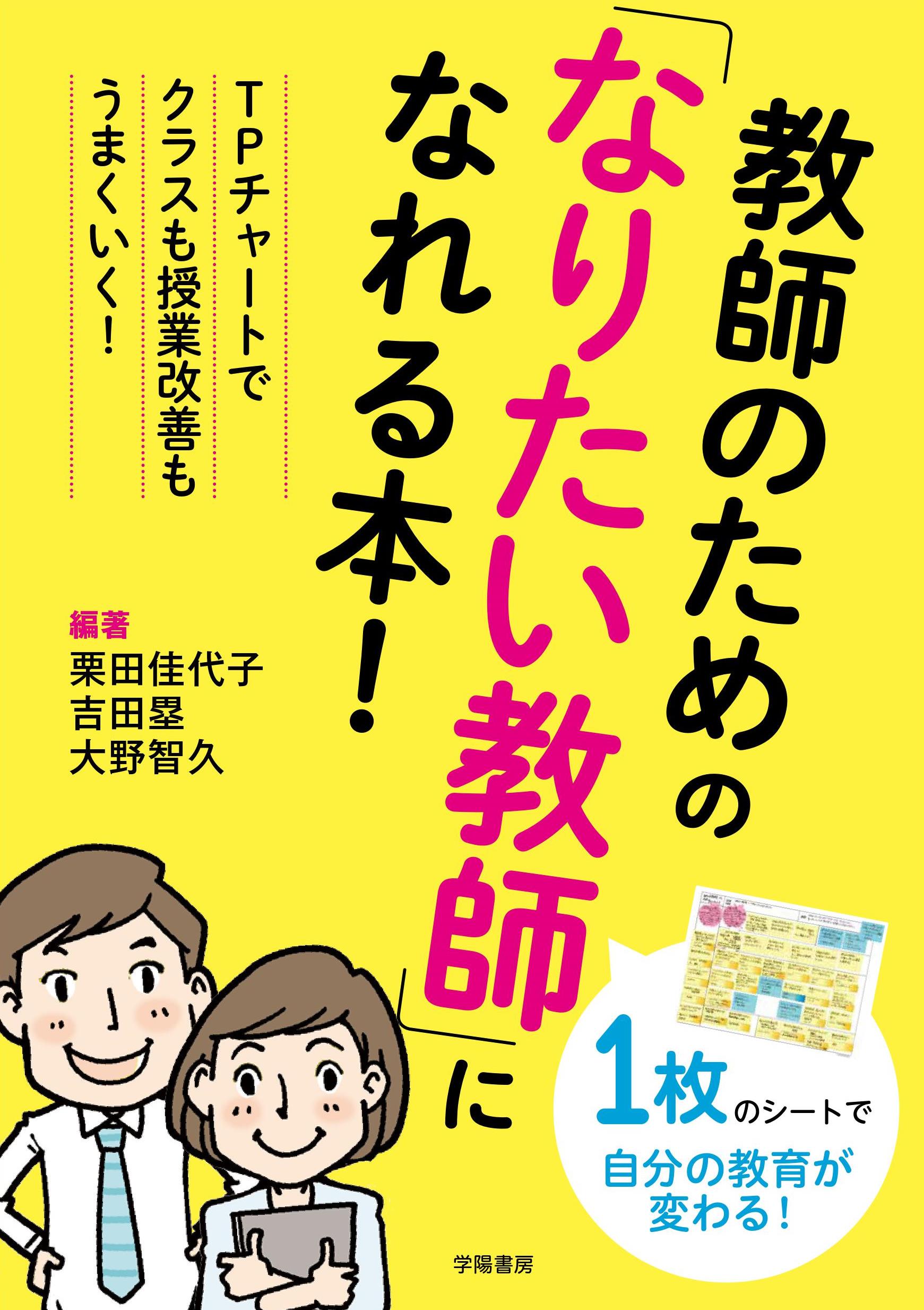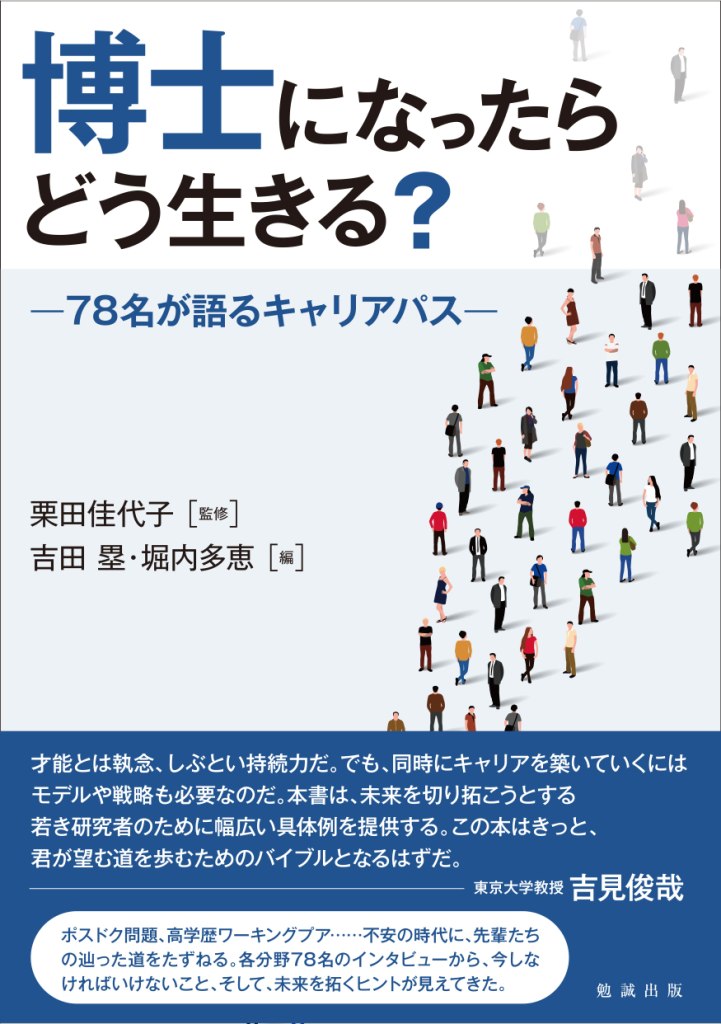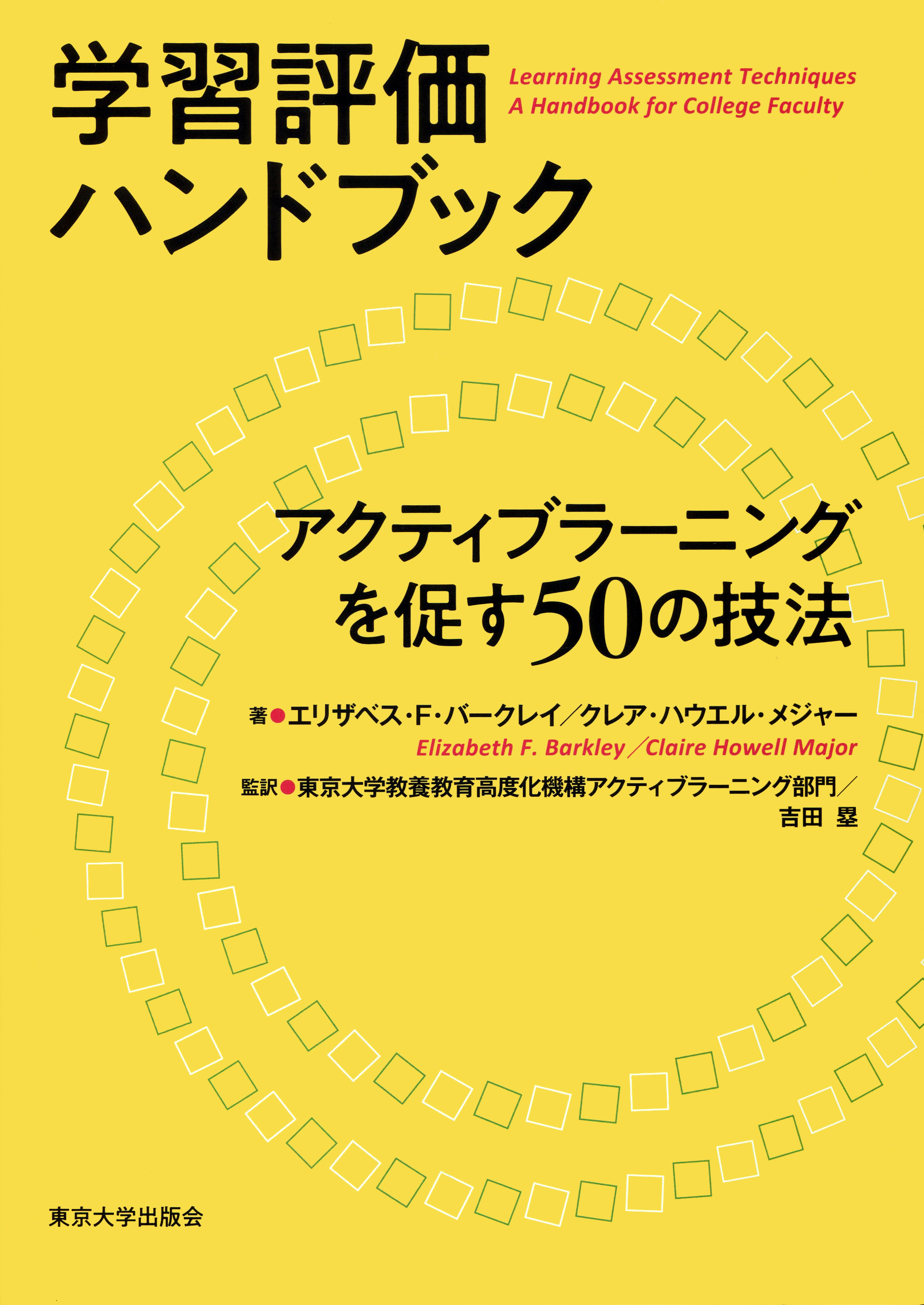
Title
Gakushu Hyoka Handbook (Learning Assessment Techniques: A Handbook for College Faculty - 50 Techniques for Engaging Students and Assessing Learning in College Courses)
Size
416 pages, B5 format
Language
Japanese
Released
April 10, 2020
ISBN
978-4-13-051353-1
Published by
University of Tokyo Press
Book Info
See Book Availability at Library
Japanese Page
This book was translated into Japanese for teachers in Japan. Learning Assessment Techniques: A Handbook for College Faculty, the original book, was written by Elizabeth F. Barkley and Clair Howell Major. In addition to approaches and designs for learning assessment, the book introduces, in a reader-friendly way, a total of 50 techniques.
The book’s introduction outlines the authors’ conceptual framework of learning assessment. The authors describe their central topic of Learning Assessment Techniques (LATs) and Fink’s Taxonomy of Significant Learning, which plays an important role in this book. The introduction offers a broad idea of the book’s structure and content, so readers are advised to read this first and then read the sections that interest them.
Chapters 1 through 6 provide a general description of the assessment. Each chapter deals with a different phase of the cycle: clarifying what you want students to learn, determining your purpose for assessing student learning, selecting a LAT, implementing it, analyzing and reporting what students have learned, and closing the loop (incorporating the results of the assessment into future teaching). For this reason, readers wishing to understand the processes and flow of assessment are recommended to read these chapters thoroughly.
Chapters 7–12 describe the different learning domains in Fink’s Taxonomy of Significant Learning (foundational knowledge, application, integration, human dimension, caring, and learning how to learn) and introduce LATs for each domain. For each technique, using detailed practical examples, the authors explain, how to prepare the technique, implement it, and analyze and aggregate its outcomes. From the general description of the technique’s flow alone, some readers may be left puzzled as to how they would incorporate LAT into their classes in practice, but the detailed practical examples should give readers a clear idea of how they would apply LAT. There are also examples for online learning setting, in addition to in-class, meaning that the book’s content is also applicable to the educational landscape affected by the coronavirus pandemic, for better or worse.
The book is primarily intended for faculty, but it also offers accessible content for students interested in teaching, so it is recommended for anyone interested in the topic. In a departure from the traditional notion of assessment as a determiner of academic performance or as something that happens at the end of term, the book communicates a more nuanced, diverse vision that sees assessment as a vital step in the process of learning.
(Written by YOSHIDA Lui, Project Assistant Professor (March 2019), Graduate School of Arts and Sciences / 2020)



 Find a book
Find a book


